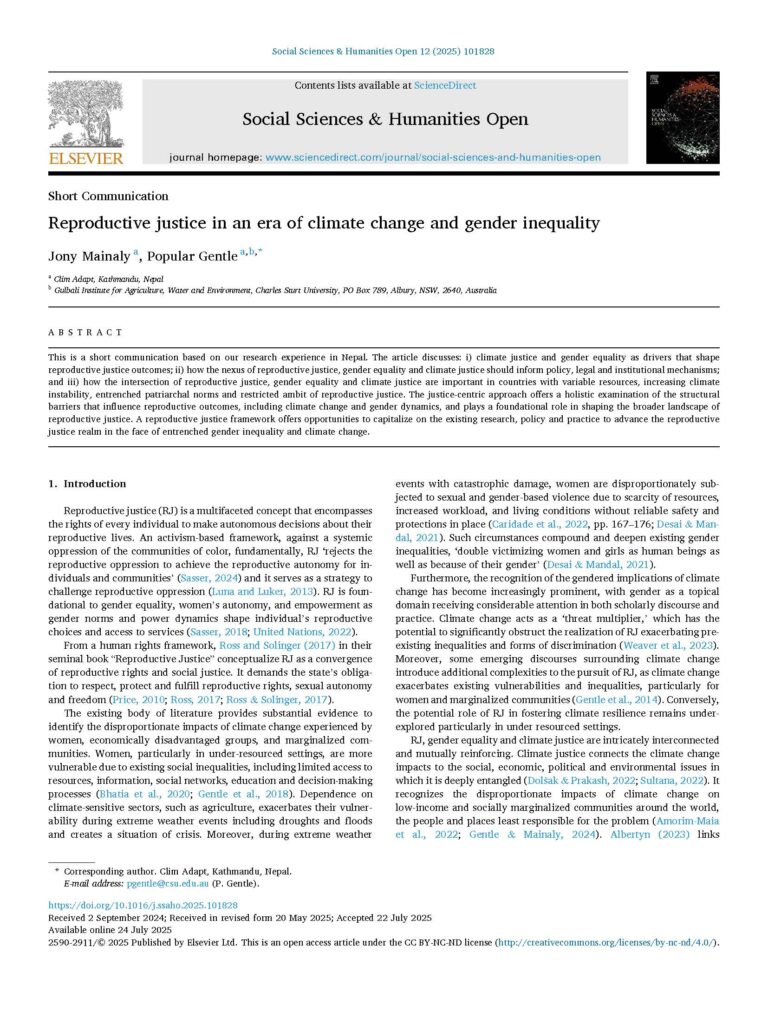Reproductive justice in an era of climate change and gender inequality
Jony Mainaly, Popular Gentle
Reproductive justice (RJ) is a multifaceted concept that encompasses the rights of every individual to make autonomous decisions about their reproductive lives. An activism-based framework, against a systemic oppression of the communities of color, fundamentally, RJ ‘rejects the reproductive oppression to achieve the reproductive autonomy for individuals and communities’ (Sasser, 2024) and it serves as a strategy to challenge reproductive oppression (Luna and Luker, 2013). RJ is foundational to gender equality, women’s autonomy, and empowerment as gender norms and power dynamics shape individual’s reproductive choices and access to services (Sasser, 2018; United Nations, 2022).
From a human rights framework, Ross and Solinger (2017) in their seminal book “Reproductive Justice” conceptualize RJ as a convergence of reproductive rights and social justice. It demands the state’s obligation to respect, protect and fulfill reproductive rights, sexual autonomy and freedom (Price, 2010; Ross, 2017; Ross & Solinger, 2017).
The existing body of literature provides substantial evidence to identify the disproportionate impacts of climate change experienced by women, economically disadvantaged groups, and marginalized communities. Women, particularly in under-resourced settings, are more vulnerable due to existing social inequalities, including limited access to resources, information, social networks, education and decision-making processes (Bhatia et al., 2020; Gentle et al., 2018). Dependence on climate-sensitive sectors, such as agriculture, exacerbates their vulnerability during extreme weather events including droughts and floods and creates a situation of crisis. Moreover, during extreme weather events with catastrophic damage, women are disproportionately subjected to sexual and gender-based violence due to scarcity of resources, increased workload, and living conditions without reliable safety and protections in place (Caridade et al., 2022, pp. 167–176; Desai & Mandal, 2021). Such circumstances compound and deepen existing gender inequalities, ‘double victimizing women and girls as human beings as well as because of their gender’ (Desai & Mandal, 2021).

